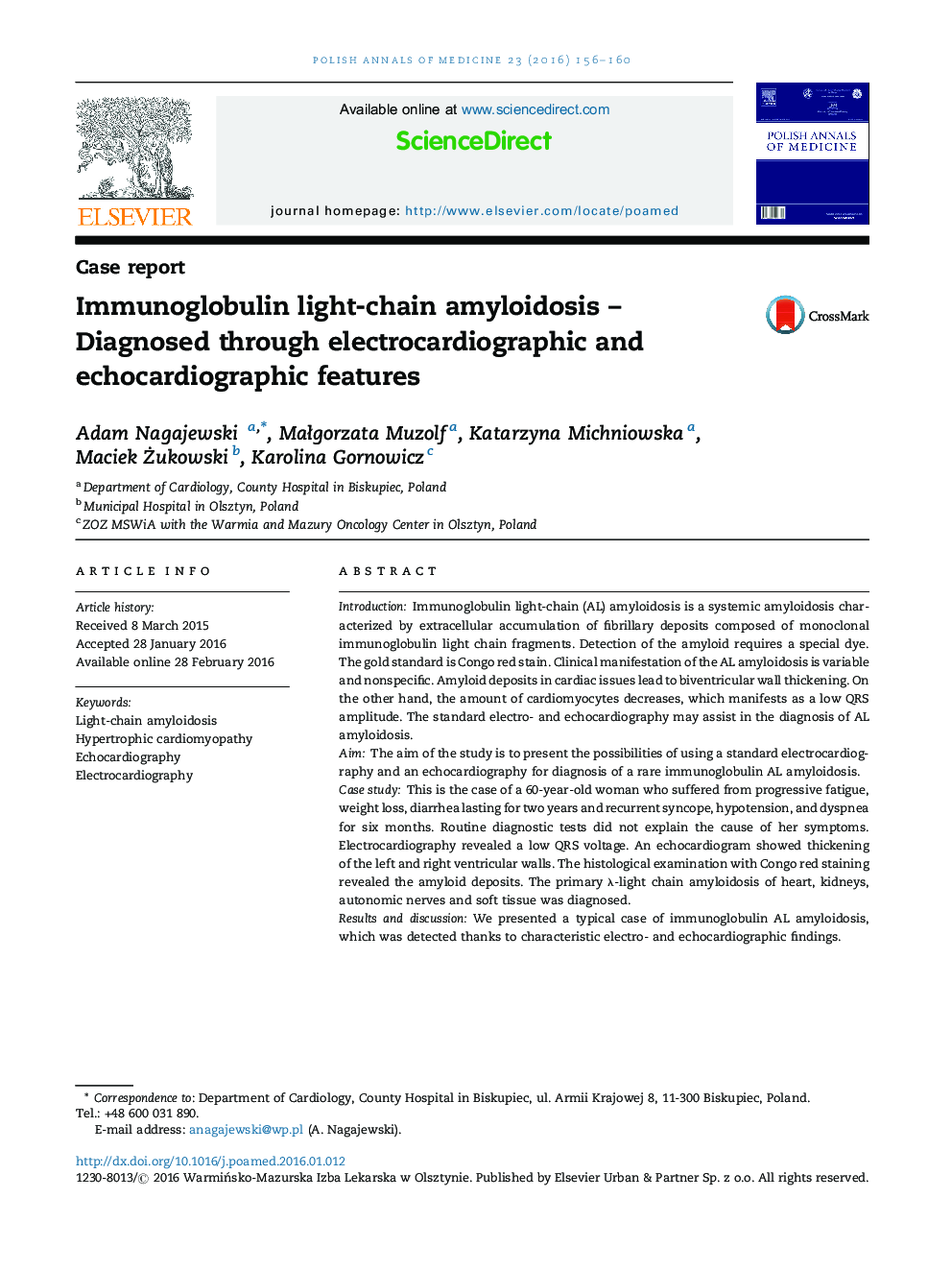| Article ID | Journal | Published Year | Pages | File Type |
|---|---|---|---|---|
| 2675303 | Polish Annals of Medicine | 2016 | 5 Pages |
IntroductionImmunoglobulin light-chain (AL) amyloidosis is a systemic amyloidosis characterized by extracellular accumulation of fibrillary deposits composed of monoclonal immunoglobulin light chain fragments. Detection of the amyloid requires a special dye. The gold standard is Congo red stain. Clinical manifestation of the AL amyloidosis is variable and nonspecific. Amyloid deposits in cardiac issues lead to biventricular wall thickening. On the other hand, the amount of cardiomyocytes decreases, which manifests as a low QRS amplitude. The standard electro- and echocardiography may assist in the diagnosis of AL amyloidosis.AimThe aim of the study is to present the possibilities of using a standard electrocardiography and an echocardiography for diagnosis of a rare immunoglobulin AL amyloidosis.Case studyThis is the case of a 60-year-old woman who suffered from progressive fatigue, weight loss, diarrhea lasting for two years and recurrent syncope, hypotension, and dyspnea for six months. Routine diagnostic tests did not explain the cause of her symptoms. Electrocardiography revealed a low QRS voltage. An echocardiogram showed thickening of the left and right ventricular walls. The histological examination with Congo red staining revealed the amyloid deposits. The primary λ-light chain amyloidosis of heart, kidneys, autonomic nerves and soft tissue was diagnosed.Results and discussionWe presented a typical case of immunoglobulin AL amyloidosis, which was detected thanks to characteristic electro- and echocardiographic findings.ConclusionsThe coexistence of multiorgan dysfunction and the thickening of ventricular walls as shown by echocardiography combined with the lack of hypertrophy electrocardiographical features enables us to diagnose amyloidosis intravitally.
